Sarebbe stato un attacco cardiaco e un’ingestione di farmaci a provocare il decesso del tre volte campione del mondo.
Due referti contrastanti sarebbero stati rilasciati in merito alle cause della morte di Andy Irons. Secondo un report ufficiale ottenuto dal New York Times, la causa principale della morte è stata attacco cardiaco collegato a una malattia dell’arteria coronaria. La seconda causa della morte, secondo il Times, è stata un’acuta ingestione di farmaci.
L’autopsia è stata preparata dall’ufficio del Tarrant County Medical Examiners, essa però non sarà resa pubblica fino al 20 giugno. Nel frattempo un comunicato stampa è stato rilasciato dalla famiglia Irons con le conclusioni del dott. Vincent Di Maio, medico interpellato dalla famiglia, secondo il quale “L’ingestione di farmaci e droghe non è stata la causa della morte e non ha contribuito alla sua morte, che è da ritenersi naturale.”
Dopo il primo rinvio richiesto dalla famiglia dopo la morte di Andy Irons avvenuta lo scorso 2 novembre in un hotel di Dallas, e dopo un secondo rinvio richiesto recentemente da un avvocato di Dallas senza il consenso della famiglia Irons, è stato ora rilasciato il referto autoptico basato sull’esame tossicologico.
La famiglia Irons ha precisato che anch’essa è rimasta all’oscuro delle cause della morte di Andy Irons fino allo scorso 20 maggio. Il primo rinvio da essa richiesto era stato motivato dal fatto che la moglie di Andy, Lyndie, era incinta di otto mesi al momento del decesso del tre volte campione del mondo e per dare alla luce in pace il figlio di Andy, Andy Axel Irons.
Secondo il dottor Vincent di Maio, incaricato della perizia da parte della famiglia Irons, Andy è morto per cause naturali dovute ad arresto cardiaco in seguito al blocco dell’arteria principale del cuore. Il dott. Di Maio, già consultato in occasione di altri importanti casi analoghi, ha dichiarato “Questo è un caso molto semplice. Il signor Irons è morto di attacco cardiaco causato da grave arteriosclerosi coronarica. Aveva una placca arteriosclerotica che causava il restringimento dell’arteria coronaria discendente anteriore del 70-80%. Questo è un restringimento molto grave. Una placca di questa gravità, situata nell’arteria coronaria discendente anteriore, è comunemente associata a morte improvvisa.”
Il Dr. Di Maio continua “L’unico aspetto insolito di questo caso è l’età di Mr. Irons, 32 anni. Morti di questo tipo avvengono di solito sopra i 40 anni. Individui come Mr. Irons hanno una predisposizione genetica a sviluppare in anticipo questo disagio dell’arteria coronaria. In circa il 25% della popolazione, il primo sintomo di una grave arteriosclerosi coronaria è la morte improvvisa” ed ha concluso dicendo che “Non ci sono stati altri fattori che hanno contribuito alla sua morte.”
Leggi qui l’articolo del New York Times
Di seguito le dichiarazioni ufficiali della famiglia Irons.
Irons’ Family Statement
June 8th, 2011
TO: MEMBERS OF THE MEDIA
FROM: THE FAMILY OF ANDY IRONS
RE: OFFICIAL IRONS FAMILY STATEMENT REGARDING ANDY IRONS AUTOPSY AND TOXICOLOGY REPORT
We have received the final autopsy and toxicology report filed in connection with Andy’s death on November 2nd, 2010, from the Tarrant County District Attorney’s Office in Forth Worth, TX.
The family apologizes for the delay in the release of this information. The injunction filed last December was to allow Andy’s widow, Lyndie, who was then eight months pregnant with Andy’s son, Andy Axel Irons, to give birth in peace. Please understand that this decision meant that the family did not learn the cause of Andy’s death until May 20th, and only after a second delay was requested by an attorney in Dallas, without the family’s knowledge or consent, to provide time for the 13-page toxicology report to be interpreted by two independent forensic experts – a process that took several weeks, but also enabled the family to fully come to terms with the unexpected root cause of Andy’s death.
The autopsy concludes that Andy died a natural death from a sudden cardiac arrest due to a severe blockage of a main artery of the heart. Dr. Vincent Di Maio, a prominent forensic pathologist in San Antonio, TX, who has consulted on many high-profile cases, was asked to review and explain the autopsy results to the family. He states: “This is a very straightforward case. Mr. Irons died of a heart attack due to focal severe coronary atherosclerosis, i.e., ‘hardening of the arteries.’ He had an atherosclerotic plaque producing 70%-80% narrowing of his anterior descending coronary artery.This is very severe narrowing. A plaque of this severity, located in the anterior descending coronary artery, is commonly associated with sudden death.”
Dr. Di Maio continues: “The only unusual aspect of the case is Mr. Irons’ age, 32 years old. Deaths due to coronary atherosclerosis usually begin to appear in the late 40′s. Individuals such as Mr. Irons have a genetic predisposition to early development of coronary artery disease. In about 25% of the population, the first symptom of severe coronary atherosclerosis is sudden death.” He concludes: “There were no other factors contributing to the death.”
Andy had a grandmother, 77, and a grand-uncle, 51, both on his father’s side, who died of congestive heart failure.Looking back, Lyndie recalls that Andy complained of chest pains and occasional intense heartburn for the first time last year, and also recalls a holistic health practitioner, whom he sought out in Australia for vitamin therapy,offhandedly mentioning he “had the heart of a 50-year-old.” In addition, Andy contracted Typhoid Fever five years ago, which can result in damage to the heart muscle.But Andy shrugged it all off and led no one to believe he was in ill health.
The official autopsy report, prepared by Tarrant County Chief Medical Examiner Nizam Peerwani, MD, lists a second cause of death as “acute mixed drug ingestion.” On this point, Dr. Peerwani and Dr. Di Maio diverge. In a letter sent to Arch McColl, a Dallas-based attorney acting on behalf of the family, Dr. Di Maio questioned Dr. Peerwani’s decision to list the finding “Acute Mixed Drug Ingestion” under “Cause of Death” because he believes “it was not the cause of death and did not contribute to the death. The Manner of Death is in fact labeled Natural.” Dr. Di Maio goes on to say that the drugs cited, Alprazolam (Xanax) and methadone (an analgesic drug commonly used in the treatment of chronic pain), are in “therapeutic levels” and notes that benzoylecgonine is an “inactive metabolite,” which Gary H. Wimbish Ph.D., DABFT, a forensic toxicologist consulted by the family, has explained is a breakdown product of cocaine. Wimbish states that the benzoylecgonine present in Andy’s blood at 50 ng/ml “is consistent with the use of cocaine at about 30 hours prior to his death.” In addition, Wimbish agrees with Dr. Di Maio that that the amount of Alprazolam present in Andy’s blood “is consistent with a common therapeutic regimen.”
Dr. Peerwani’s report also cites the presence of a trace amount of methamphetamine. Lyndie insists Andy was not a methamphetamine user, so it is likely the substance was present in the cocaine he ingested. But again, Dr. Di Maio believes that none of these drugs was the cause of, or contributed to, Andy’s death.
As we are not doctors, we have no choice but to accept that two respected pathologists have come to different conclusions about a secondary contributing cause of death. However, the family would like to address the findings of prescription and non-prescription drugs in Andy’s system. Andy was prescribed Xanax and Zolpidem (Ambien) to treat anxiety and occasional insomnia – a result of a bipolar disorder diagnosed by his family doctor at age 18. This is when Andy first began experiencing episodes of manic highs and depressive lows. The family believes Andy was in some denial about the severity of his chemical imbalance and tended to blame his mood swings on himself and his own weaknesses, choosing to self-medicate with recreational drugs. Members of his family, close friends, and an industry sponsor intervened over the years to help Andy get clean, but the effort to find balance in his life was certainly complicated by his chemical makeup.
Finally,as has been reported, Andy was suffering from severe flu-like symptoms while in Puerto Rico to compete in the Rip Curl Pro Search leg of the ASP World Tour just days prior to his death. Andy was unable to leave his bed and for the first time in his Pro career, withdrew from a contest. He was put on an intravenous drip for hydration and strongly advised to seek further medical treatment. Against doctor’s advice, Andy left for Kauai, Hawaii, to be with his wife, telling the doctor: “I just wanna go home.”
Though Andy’s illness is not addressed in the autopsy (which only tested for and ruled out suspected Dengue Fever), Andy’s weakened condition clearly contributed to the tragic circumstances of his death, adding more stress to an already gravely compromised heart.
Having defied the odds so many times before, Andy may have felt that getting on a plane while dehydrated and wracked with fever, and choosing to meet up with acquaintances during a short layover in Miami, was nothing out of the ordinary. His strong-willed personality was part of what made him such a formidable surfer and champion. Like others who face down extreme danger, Andy seemed to feel bulletproof – as if nothing could take him down.But traveling while sick and suffering from an undiagnosed heart condition, was more than even Andy could overcome.
We are hoping that people will remember Andy for his very full life, which included his intense passion for surfing and the ocean, his astonishing achievements as a world-class athlete, and his devotion to the family and friends who love him dearly and miss him every day. Receiving the disturbing news about the cause of death brings back the shock and tremendous grief we first felt upon receiving word that Andy had passed.
We would like to thank everyone for their condolences and support over the last seven months. There was so much positivity in Andy’s professional and personal life, not least of which was how hard he worked to overcome his challenges. For this we remain forever proud of him.
This continues to be a very difficult time for our family and we appreciate the media’s respect for our privacy. We are grateful for the outpouring of love and support and will not have any immediate comment beyond this statement.
For those who wish to honor Andy’s memory, we ask that they consider making a donation to the Surfrider Foundation, a charity Andy supported, at www.surfrider.org.
–The Irons Family
Related articles
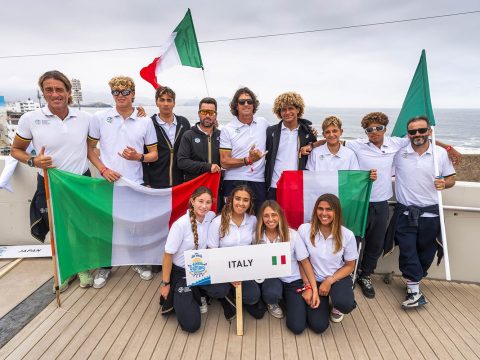
Al Via i Campionati del Mondo ISA Junior in Perù
Dic 06, 2025
Italian Barrels: On The Hunt is Back!
Nov 02, 2025

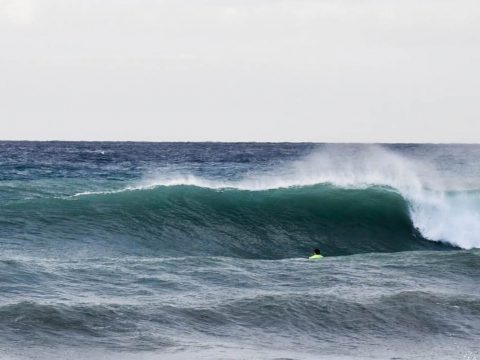

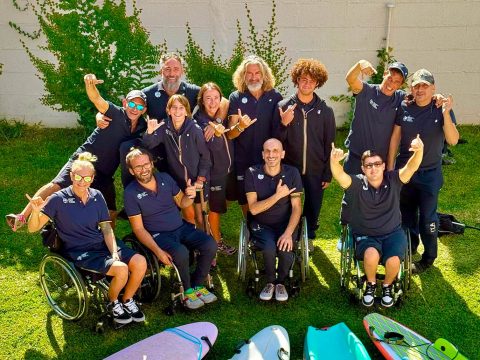
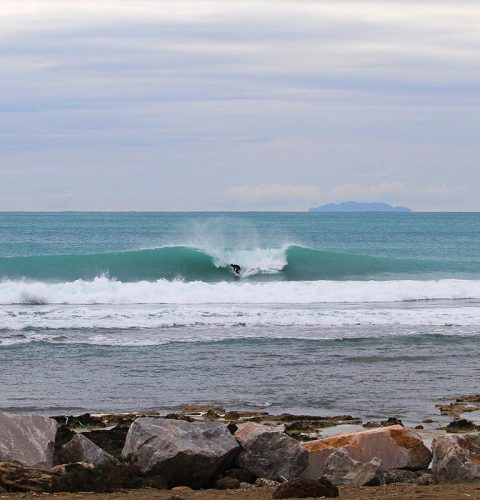

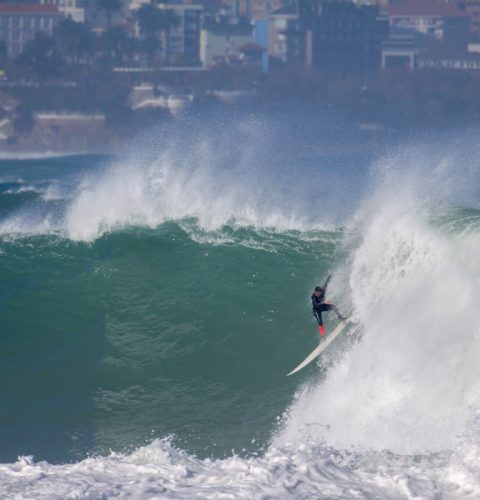

mah!?!? e la febbre denghe???? nn centrava nulla???…poi un atleta del suo calibro, con tutti i controlli che avra fatto al cuore, è possibile che nn si siano mai accorti della placca arteriosclerotica? in genere chi soffre di questi disturbi ha il colesterolo altissimmo….
What difference does it make if the drug use killed him or not?